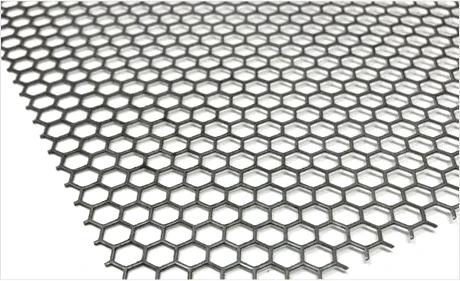-
+86 15030157877
-
sales@galvanizedmetalmesh.com
Nov . 18, 2024 07:25 Back to list
galvanized iron wire factories
Galvanized Iron Wire Factories An Overview
Galvanized iron wire is widely used in various industries due to its versatility and durability. The process of galvanization, which involves coating iron or steel with a layer of zinc, offers protection against corrosion and enhances the wire's lifespan. This article explores the significance of galvanized iron wire factories, their operational processes, and the applications of their products.
Understanding Galvanized Iron Wire
Galvanized iron wire is produced by dipping iron wire into molten zinc or by electroplating it with a layer of zinc. This coating serves as a protective barrier, preventing corrosive elements from reaching the iron core. The galvanized wire is available in different diameters and tensile strengths, making it suitable for a wide range of applications. Common uses include fencing, construction, agriculture, and manufacturing.
The Role of Galvanized Iron Wire Factories
Galvanized iron wire factories play a crucial role in meeting the growing demand for galvanized wire products. These factories are equipped with advanced machinery that can produce wire efficiently and at scale. The production process typically involves several key steps
1. Wire Drawing The first step in the manufacturing process is wire drawing, where large coils of metal are drawn through progressively smaller dies to achieve the desired diameter. This process also increases the wire’s tensile strength.
2. Cleaning and Preparation Before galvanization, the wire must be thoroughly cleaned to remove any oils, dust, or impurities. This is often achieved through processes such as chemical cleaning, pickling, and rinsing.
galvanized iron wire factories

3. Galvanizing After cleaning, the wire undergoes the galvanization process. For hot-dip galvanization, the cleaned wires are submerged in molten zinc, allowing the zinc to bond with the iron. Electro-galvanization, on the other hand, involves using an electric current to deposit zinc onto the wire surface.
4. Cooling and Inspection Once coated, the galvanized wire is cooled and inspected for quality assurance. Factories often conduct tests to ensure that the wire meets industry standards for tensile strength, corrosion resistance, and coating thickness.
5. Packaging and Distribution Finally, the galvanized wire is wound into coils or cut into specified lengths, packaged, and prepared for distribution. Factories often have established networks to supply a diverse range of clients, from local businesses to international distributors.
Applications of Galvanized Iron Wire
The uses of galvanized iron wire are extensive, making it an essential material in several sectors. In construction, it is utilized for reinforcing concrete, making wire mesh, and fabricating barbed wire for security fencing. In agriculture, galvanized wire is commonly used for livestock fencing, trellising plants, and securing poultry enclosures.
Additionally, galvanized wire is used in manufacturing products like wire ropes, electrical cables, and HVAC systems. Its resistance to rust and corrosion makes it an ideal choice for outdoor applications and in environments exposed to moisture and chemicals.
Conclusion
Galvanized iron wire factories are integral to supplying high-quality, durable wire for various industries. Through advanced manufacturing processes and rigorous quality control, these factories ensure that their products meet the demands of the market. As the construction, agriculture, and manufacturing sectors continue to grow, the importance of galvanized iron wire and its factories remains a critical component in supporting various infrastructure and industrial needs.
-
Welded Gabion Solutions: Durable & AI-Enhanced Designs
NewsAug.01,2025
-
Premium Welded Gabion Mesh | Robust & Eco-Friendly
NewsJul.31,2025
-
Premium Eco-Friendly Roof Tiles | Affordable & Durable
NewsJul.31,2025
-
Premium Roof Tiles for Durable & Stylish Roofing Solutions
NewsJul.30,2025
-
High-Quality Roof Tiles for Durable & Stylish Roofing Solutions
NewsJul.29,2025
-
High Quality Square Wire Mesh Manufacturer & Supplier for Wholesale
NewsJul.29,2025



